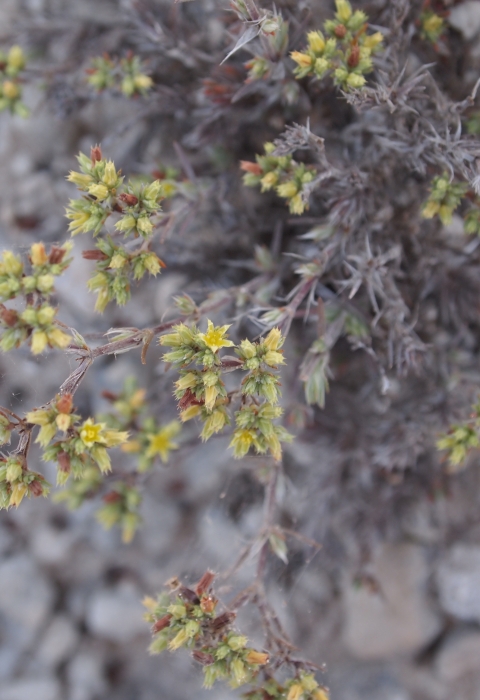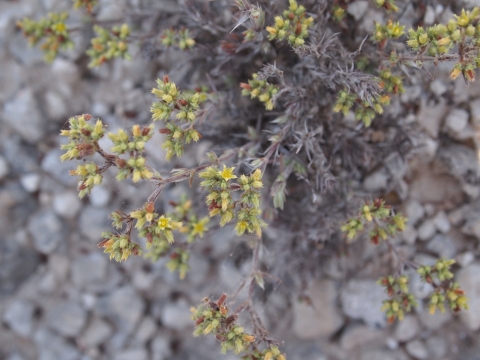The U.S. Fish and Wildlife Service is announcing a proposal to list bushy whitlow-wort, an herbaceous perennial plant from South Texas, as an endangered species under the Endangered Species Act.
Bushy whitlow-wort is one of 110 species in the genus Paronychia, which gets its name from the disease of the fingernails which it was once thought to cure. The long-lived, woody-based species flowers from spring to late summer in response to rainfall and produces tiny, one-seeded fruits.
Bushy whitlow-wort is adapted to the hot, semi-arid, subtropical climate of South Texas, and the only two documented populations occur on 48 acres of nearly barren rocky outcrops within the Tamaulipan shrublands in northwestern Jim Hogg County.
After reviewing the best available science, the Service finds that bushy-whitlow wort is in danger of extinction throughout its range due to development of new oil and gas wells and wind energy infrastructure. Small population sizes put the species at a higher risk of extinction as a single event could easily destroy a large portion of its known remaining resources.
Critical habitat identifies geographic areas containing features essential for the conservation of a threatened or endangered species, and which may require special management considerations or protection. The Service is proposing two occupied units of critical habitat for bushy whitlow-wort totaling 41.96 acres (16.98 hectares) on privately owned land in Jim Hogg County.
This critical habitat designation would affect only federal agency actions or federally funded or permitted activities and would not affect land ownership, allow the government to take or manage private property, establish a refuge, reserve, preserve, or other conservation area conservation area
A conservation area is a type of national wildlife refuge that consists primarily or entirely of conservation easements on private lands. These conservation easements support private landowner efforts to protect important habitat for fish and wildlife and major migration corridors while helping to keep agricultural lands in production.
Learn more about conservation area , or allow government or public access to private land.
Plant diversity is important for the functioning of key ecosystem services such as mitigating climate and moderating weather, soil creation and stabilization, nutrient cycling, supporting pollinators and water storage and purification. The loss of plant diversity has negative consequences for forage production, wildlife habitat and overall ecosystem health.
The Service is committed to collaborative conservation, transparency, and ensuring that ESA findings are science driven. The Service worked with diverse stakeholders to gather the best available science on the species and collaborate on its conservation.
Comments are invited on the proposed rule to list the bushy whitlow-wort as endangered, which appears in the Federal Register on March 19, 2024.
Comments may be submitted through May 20, 2024 by one the following methods:
Electronically: Go to the Federal eRulemaking Portal: http://www.regulations.gov. In the Search box, enter the docket number or RIN for this rulemaking ( FWS-R2-ES-2023-0102 or 1018–BF72). For best results, do not copy and paste either number; instead, type the docket number or RIN into the Search box using hyphens. Then, click on the Search button. On the resulting page, in the panel on the left side of the screen, under the Document Type heading, check the Proposed Rule box to locate this document. You may submit a comment by clicking on “Comment.”
By hard copy: Submit by U.S. mail to: Public Comments Processing, Attn: FWS-R2-ES-2023-0102, U.S. Fish and Wildlife Service, MS: PRB/3W, 5275 Leesburg Pike, Falls Church, VA 22041–3803.
The Service will evaluate all information received during the comment period and will announce a final decision within 12 months.
The ESA is extraordinarily effective at preventing species from going extinct and has inspired action to conserve at-risk species and their habitat before they need to be listed as threatened or endangered. Since it was signed into law in 1973, more than 99 percent of all species listed under the law are still with us today.




